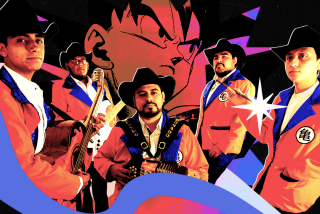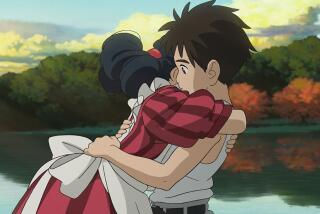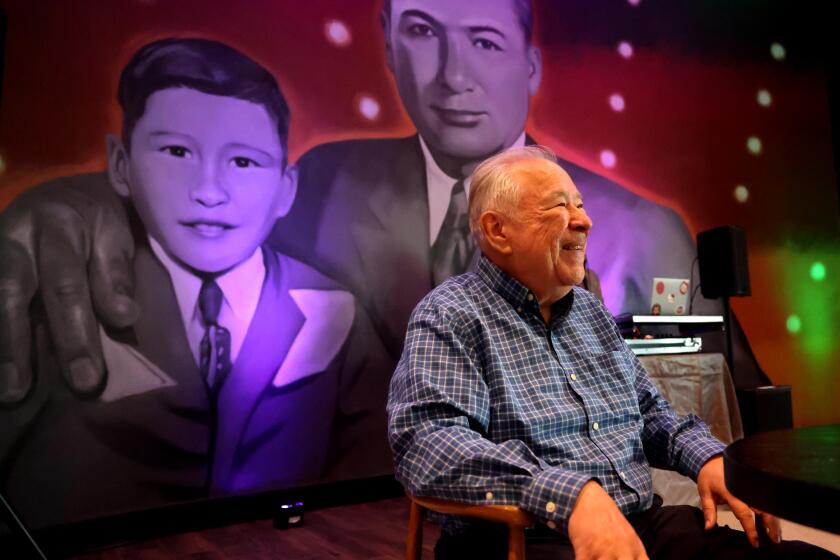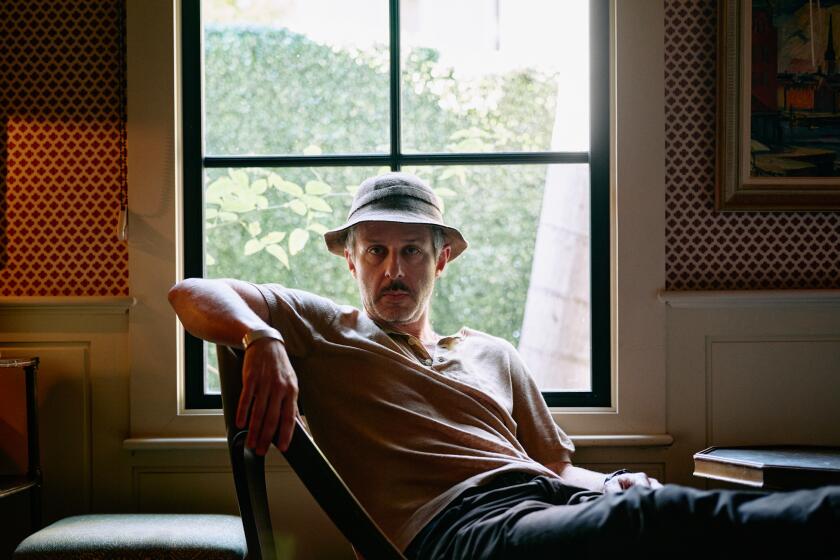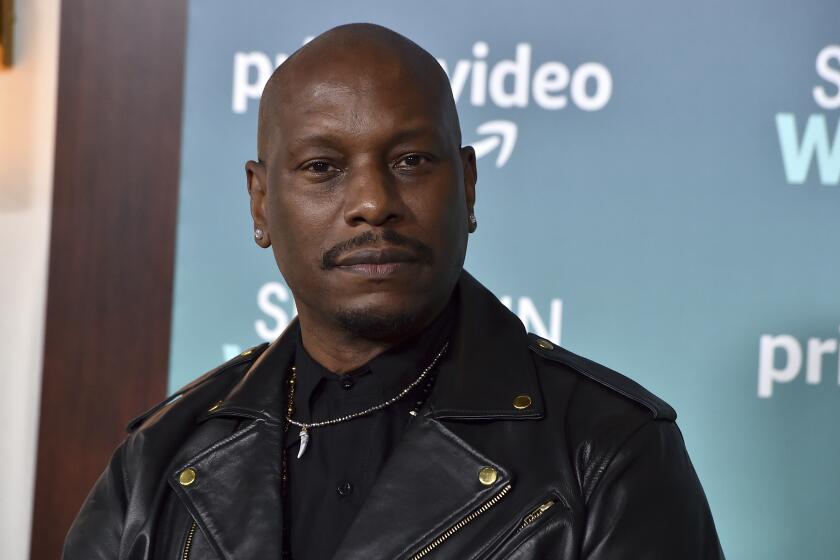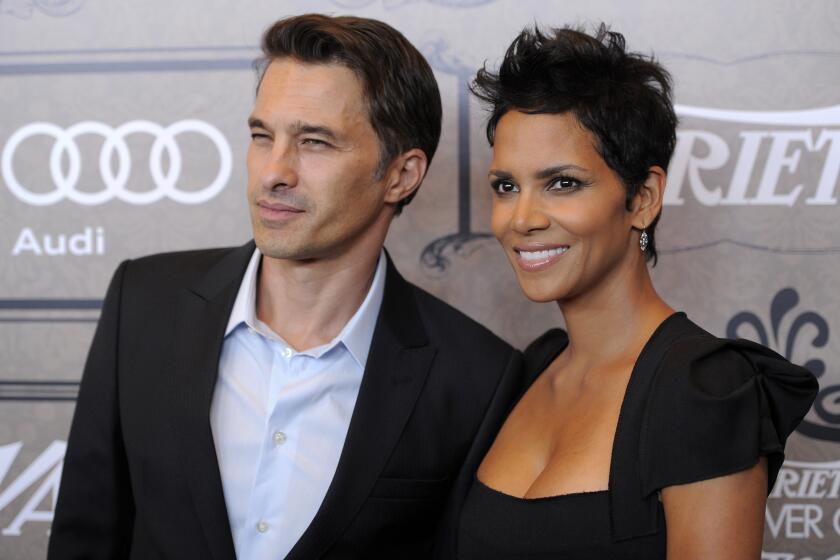AT THE HEAD OF THE PACK
TOKYO — The heroine in “Princess Mononoke” is no Snow White: She wears an animal-fang necklace and sports a matching temperament. She makes her debut in the animated film by sucking poisoned blood from the wolf-god beast that raised her.
Nevertheless, with its bizarre plot line and brilliant animation, “Princess Mononoke” scored the biggest hit ever among Japanese-made films, racking up sales of $150 million. When the film opened two years ago in Tokyo, Japanese of all ages camped out overnight waiting for tickets. For weeks, theaters opened at dawn for special 7 a.m. shows and squeezed in another seven or eight showings each day to accommodate the crowds.
“Princess Mononoke” quickly overtook “E.T., the Extra-Terrestrial” as the highest-grossing film in Japan, with more than 13 million fans flocking to see it. (“Titanic” later shattered all records, pushing “Princess Mononoke” back to second place.)
Filmgoer Motoyo Hasegawa’s glowing comment was typical. “It’s a beautiful picture,” said the 49-year-old homemaker.
Defining exactly what made the movie so popular in Japan isn’t easy, however. “It’s edgy enough that young people liked it, but traditional enough that older folks liked it too,” said Stephen M. Alpert, a publicist at Tokuma International, an entertainment distributor in Japan and parent company for Studio Ghibli, “Mononoke” director Hayao Miyazaki’s animation production house.
Released in Japan by Toho Co., “Mononoke” played for months to sellout crowds in Japanese theaters. The $150-million box-office gross is all the more remarkable because Japan has only about one-tenth the number of screens in the U.S.
But it’s likely to be a far more difficult sell in the U.S.
It’s not a happily-ever-after storybook romance, and it surely isn’t typical Disney, though it is Disney’s Miramax art-house unit that is marketing the film in the States.
In fact, a decade ago, Miyazaki wrote that he hated Disney pieces because they underestimated the audience. “It’s OK to deal with light topics, but [movies] have to have a true message,” the animator wrote. “They have to be accessible enough for the audience to get into, but still be truthful in the exit. They should neither encourage nor exaggerate stupidity or ignorance.”
Tomomi Katsuta, a critic for the Mainichi News in Tokyo, agreed in a 1997 review that “the greatest reason for ‘Princess Mononoke’s’ enormous success is that it did not disappoint the high expectations of its audience.”
Though the film, touted as an “eco-fable,” is animated, it isn’t a kids’ movie. In fact, it’s just the opposite, with blood, gore and violence galore. That didn’t stop many Japanese parents from taking their kids to see it anyway, with predictable results. “My 7-year-old son fell asleep and my 10-year-old nephew didn’t understand it,” said Takeshi Yamamoto, a Tokyo worker.
Indeed, the theme is sophisticated: A girl raised by a wolf joins forces with forest gods against human invaders. Though the movie is set in Japan during the Muromachi period, which ended in 1573, the main characters are drawn from outcast groups and minorities. Miyazaki’s point is to portray “the conflict between the ancient land of primeval forests and animistic gods and the then-emerging modern industrial civilization, which was a product of Japan’s contact with the outside world,” according to a book published by his studio titled “Princess Mononoke: The Art and Making of Japan’s Most Popular Film of All Time.”
Also fueling the film’s success in Japan: Animation and cartoons are far more popular in Japan than the U.S. among all ages, says Jun Watanabe, a sociologist at Tokyo College of Economics. “Animation in Japanese culture is equivalent to movies and literature” of other countries, Watanabe says.
One reason is that Japan has difficulty competing head-to-head with Hollywood, which is more skilled at making “real history into entertainment,” says Hideaki Hirano, a sociologist at Hosei University in Tokyo. “American movies turn ongoing social events into odes, but in Japan, we don’t have that kind of ability. Maybe animation is a better method to compete with American movies when it comes to tough themes.”
Certainly, animators don’t get much more popular in Japan than Miyazaki. “Mononoke” had been awaited for five years and was rumored to be his last film because of vision problems.
“Miyazaki’s animation provides a unique atmosphere that human actors can’t convey,” said Song Yuhyang, 19, a university student.
To date, the most popular Japanese movie in the U.S. has been “Shall We Dance?,” about a Japanese salaryman who attempts to learn to dance to conquer his loneliness. (The film grossed $9.7 million when it was released in the U.S. in 1997.) In Japan, however, only one-fifth as many people went to see it as went to see “Mononoke.”
Miramax, however, is hoping that dubbing “Princess Mononoke” into English using popular actors--which is one reason the film’s introduction in the U.S. was delayed two years--will help make it a commercial hit in the U.S. too. “In the U.S., there is a prejudice against foreign films,” said Alpert. “With dubbing, maybe it’ll get over the hump.”
More to Read
Only good movies
Get the Indie Focus newsletter, Mark Olsen's weekly guide to the world of cinema.
You may occasionally receive promotional content from the Los Angeles Times.
